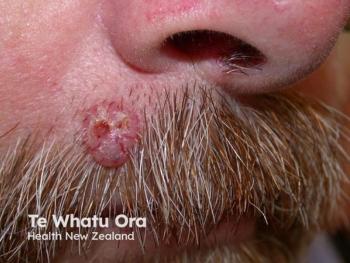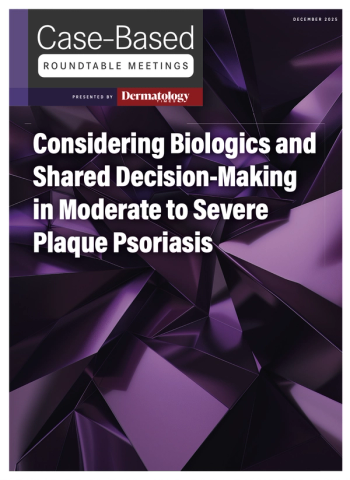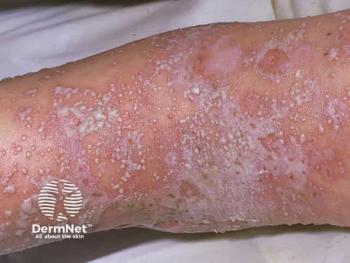
AI-Powered Insights From 1 Million Users Reveal New Trends in Hair Loss
Key Takeaways
- Androgenetic alopecia is the most prevalent hair loss type in the US, affecting 50 million men and 30 million women.
- Women report more mild thinning, while men have higher severe hair loss rates, with genetic predisposition stronger in males.
A first-of-its-kind study reveals artificial intelligence (AI)-driven insights on hair loss trends, highlighting the impact of genetics, hormones, and COVID-19 on alopecia.
A new study presented at the 2025 American Academy of Dermatology Innovation Academy in Chicago, Illinois, explored trends in alopecia and hair loss epidemiology as the largest consumer-sourced hair loss data set to date.1 A team of researchers, led by
The cross-sectional analysis included 1,009,998 anonymized, self-reported entries collected between 2020 and 2024. The data set was primarily female (75.6%), with 24.4% male users. Overall, 86.4% reported visible hair loss (43.7% mild, 31.6% moderate, and 11.2% severe). An additional 13.6% reported excessive shedding with a full head of hair. Notably, moderate to severe hair loss increased with age: 25% in the group with those aged 18 to 29 years, 41% in those aged 30 to 44 years, 54% in those aged 45 to 64 years, and 67% in participants aged 65 years and older.
Several gender-specific patterns were observed in the analysis. Women reported more mild hair thinning (46.8%) than men (34.1%), but men had a higher prevalence of severe hair loss (12.5% vs 10.7%). Men also exhibited higher absolute rates of genetic predisposition (68%-74% vs 33%-48% in women), although the relative risk was higher in women (1.49 vs 1.21). These findings suggest that although genetic influence is stronger in men regarding absolute prevalence, female pattern hair loss may be more multifactorial, involving hormonal, medical, and stress-related triggers.
“Women seeking hair loss treatment on the MDhair platform showed higher rates of mild thinning [46.8% vs 34.1% in men], suggesting women begin addressing hair concerns earlier than men,” Harth told Dermatology Times. “Gradual hair loss affected 84.86% of males and 67.82% of females, while sudden loss occurred in 32.18% of females and 15.14% of males.”
Hormonal status also played a critical role, as postmenopausal women had significantly higher odds of moderate to severe hair loss compared with premenopausal women (OR 1.6), with 13.7% reporting severe thinning vs 9.8% in younger women. Similarly, postpartum women experienced sudden shedding more often than their nonpostpartum counterparts (30% vs 18%; P < .001), supporting the role of hormonal fluctuations in telogen effluvium. Other key predictors included polycystic ovary syndrome in women (OR ~1.4), thyroid dysfunction (OR ~1.3), and high stress, particularly for sudden shedding (OR ~1.5). Notably, COVID-19 history was significantly associated with sudden hair loss (33.4% vs 24.1%; OR 1.57), especially in severe cases (up to 40%), suggesting a strong postviral telogen effluvium component.
Dietary patterns showed no statistically significant correlation with hair loss severity. Among 721,759 participants, a correlation coefficient near zero (r = –0.0072) was found between weekly vegetable consumption and hair loss, challenging the assumption that moderate dietary variations substantially affect hair density on a population level. In 9% of users with chronic scalp conditions such as eczema or psoriasis, there was a modest association with hair loss (OR 1.16), indicating that although relevant, these conditions play a smaller role than age, genetics, or hormones.
Lifestyle behaviors like shampoo frequency varied by gender and age but were not directly correlated with hair loss. Women shampooed more frequently in middle age (30-44 years), whereas older men maintained higher washing rates (4.65 vs 3.56 weekly washes), possibly reflecting differing grooming habits, sebum production, or hair texture. Additionally, “high stress levels increased odds of severe sudden hair thinning by 1.41 times in females and 1.26 times in males,” according to Harth.
There were some limitations, including the self-reported nature of the data and selection bias, as well as the cross-sectional design, which also limits causal inference. Nonetheless, this work validates known genetic, hormonal, and medical associations while identifying new links, particularly between stress, COVID-19, and sudden hair loss. These automated assessments and findings can help refine clinical screening, identify at-risk individuals, and support more tailored approaches to hair loss management in practice. Future directions include longitudinal monitoring and image-based diagnostics to validate and expand upon these insights.
“The combination of AI-based diagnostics and massive consumer participation provides an unprecedented opportunity to uncover real-world patterns in hair loss and treatment response—at a scale never before possible,” Harth said.
References
1. Harth Y, Harth O. Epidemiology of hair loss in over one million individuals: insights from an AI-based direct-to-consumer platform. Presented at: 2025 American Academy of Dermatology Innovation Academy; July 10-13, 2025; Chicago, IL.
2. Blume-Peytavi U, Hillmann K, Guarrera M, et al. Androgenetic alopecia in men and women. Clin Dermatol. 2011;29(2):148-156. doi:10.1016/j.clindermatol.2010.11.005
Newsletter
Like what you’re reading? Subscribe to Dermatology Times for weekly updates on therapies, innovations, and real-world practice tips.


















